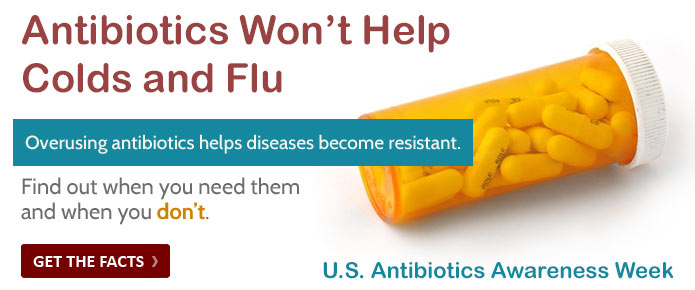Lead
Is there a need for blood lead testing?
Blood tests are used to find out how much lead is in a child's blood. These tests may show blood lead levels that are:- No cause for concern
- Higher than normal, but that do not require medical treatment
- Possibly harmful and that require medical treatment
Screening is prevention, too?
Screening for lead is the best first step toward preventing lasting harm from lead poisoning. Be sure to discuss your child's need for screening with your child's health-care provider.
What are some of the sources of lead?
- Paint
- Dust
- Soil
- Food
- Water
- Toys
- Pottery
Mold
- Does mold affect my health?
Most molds do not harm healthy people. But people who have allergies or asthma may be more sensitive to mold. Sensitive people may experience skin rash, runny nose, eye irritation, cough, nasal congestion, aggravation of asthma, or difficulty breathing. People with an immune suppression or underlying lung disease, may be at increased risk for infections from molds. - What makes molds grow in my home?
Mold enters your home as tiny spores. The spores need moisture to begin growing, digesting and destroying. Molds can grow on almost any surface, including wood, ceiling tiles, wallpaper, paints, carpet, sheet rock, and insulation. The mold grows best when there is lots of moisture from a leaky roof, high humidity or flood. There is no way to get rid of all molds and mold spores from your home. But you can control mold growth by keeping your home dry. - Can I be exposed to mold?
When molds are disturbed, they release spores into the air. You can be exposed by breathing air containing these mold spores. You can also be exposed through touching moldy items, eating moldy food or accidental hand to mouth contact.
SIDS and Safe Sleeping
- Where should my baby sleep?
Infants should be placed for naps and at night in a safety-approved crib or bassinet for every sleep. Make sure to use a firm sleep surface, such as a mattress in a safety-approved crib, covered by a fitted sheet, to reduce the risk of SIDS and other sleep-related causes of infant death. Never place your baby to sleep on a soft surface, such as a couch or sofa, or on pillows, comforters, quilts or sheepskins. Do not place your baby to sleep on a waterbed, sofa or soft mattress that allows the baby's head to sink into the surface. - How do I make my baby's sleep area safe?
Always place your baby to sleep on their back. Soft bedding including pillows, quilts, comforters, sheepskins, pillow-like stuffed toys and other soft products should be removed from the sleep area. If bumper pads are used, they should be firm, thin, secured and not pillow-like. Keep your baby's head uncovered. - What if I want to use a blanket when putting my baby to bed?
Using a blanket is not recommended. In most cases light sleep clothing without a blanket is enough to keep baby warm during sleep. If you are concerned the room is not warm enough, consider an infant blanket sleeper. - Can smoking cause SIDS?
Mothers who smoke during pregnancy have babies with a greater risk of SIDS. Babies exposed to secondhand smoke after they are born are also at a greater risk for SIDS — up to ten times greater for babies who are around tobacco smoke for eight hours a day. Children are also more likely to have lung problems, ear infections and severe asthma from being around smoke. Never smoke around your baby or in your baby's room, and never let anyone else do so. - Is there any harm in having my baby sleep with me in my bed?
Evidence shows that bedsharing with your baby can increase the risk of SIDS and suffocation. An alternative to bedsharing is to place the baby's crib or bassinet near your bed for more convenient feeding and contact. The American Academy of Pediatrics recommends that all infants be returned to their own sleep area (crib, bassinet, cradle or bedside co-sleeper) after being brought into an adult bed for nursing or comforting.
Healthy Homes
- What is a healthy home?
A healthy home is a residence that is safe, affordable, accessible and environmentally friendly. A healthy home is also clean, safe, well-maintained and well-ventilated. A healthy home is free of pests, mold, moisture, dust, dirt and other household contaminants. A healthy home makes its inhabitants feel safe and secure. - Why do I want a healthy home?
Much of your family's time is spent in the home. The condition of your home can greatly affect your family and their health. A healthy home promotes mental, physical and social well-being. If a home is not healthy, harmful health effects can occur. - What are the unhealthy effects of an unhealthy home?
There are many harmful conditions and diseases related to poor housing conditions. These include:- Allergies
- Asthma
- Carbon monoxide poisoning
- Childhood lead poisoning
- Falls
- Fires
- Injuries
- Pesticide poisoning
- Radon
- Rodent bites
- Tobacco smoke
- How can I make my home healthy?
Complete a full inspection of your home, keeping in mind the seven elements of a healthy home.- Keep it dry
- Keep it clean
- Keep it safe
- Keep it well-ventilated
- Keep it contaminant-free
- Keep it pest-free
- Keep it well-maintained
- Keep it Climate-Controlled
Asthma
- What is asthma?
Asthma is a disease that affects the breathing passages, or airways, of the lungs. Asthma is a chronic (ongoing, long-term) inflammatory disease that causes difficulty breathing. - What causes asthma?
While there is no known specific cause of asthma, all people with asthma have chronic airway inflammation in common. Their airways are highly sensitive to various triggers. When their airways come into contact with a trigger, the airways become inflamed (they fill with mucus, swell, and narrow). Then muscles within the airways contract, causing even further narrowing of the airways.Triggers are different for different individuals. Common ones include:
- Exposure to tobacco smoke
- Breathing polluted air
- Inhaling irritants such as perfume and cleaning products
- Allergens such as molds, dust, and animal dander
- Can asthma attacks be prevented?
While asthma attacks may not always be prevented, asthma can be managed. Avoiding your triggers as much as possible is the best way to prevent asthma attacks (for example, eliminating pollen, dust and mold from a home).Exposure to pets when children are very young may lower the risk of developing asthma. Children who live with two or more pets are less likely to react to allergens. If, however, an individual is already allergic to pets, it may be important to avoid exposure to that particular trigger.

